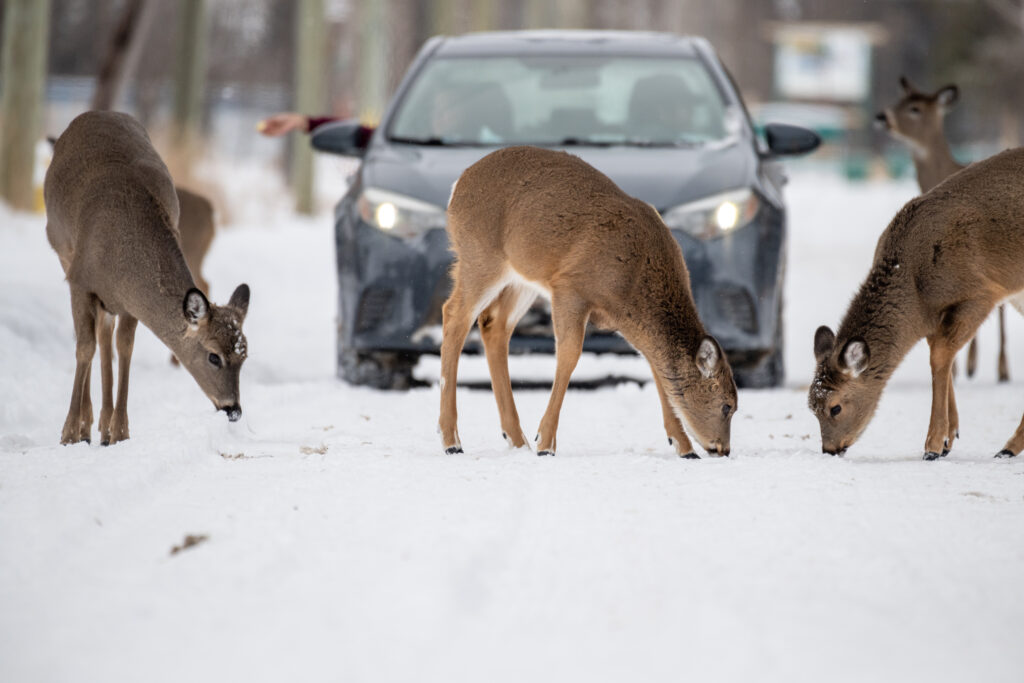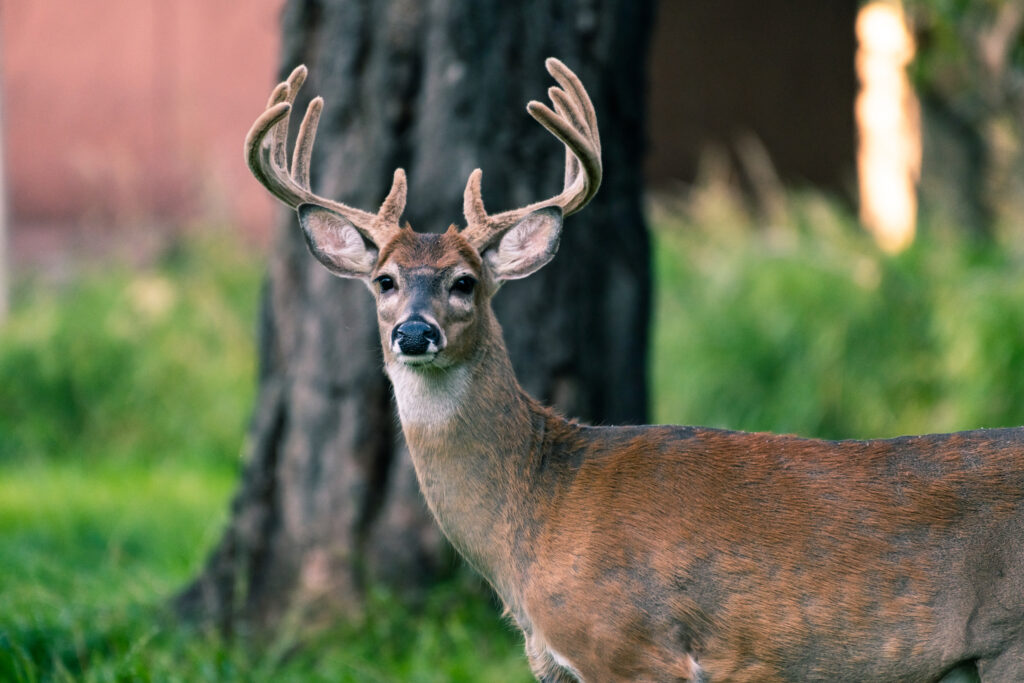
Hope for a huge, ancient and imperilled fish
First Nations are leading efforts to make sure lake sturgeon can find a home in...
The vast forest and rocky terrain on the north shore of Lake Superior offer a refuge and escape from the noise of Thunder Bay, Ont. However busy their days might be, the city’s 110,000 inhabitants know that the wonders of nature are never more than a 15 minute drive away.
That includes on tiny Mission Island, just off the city’s coast, where many go to experience extreme close-ups with the area’s wildlife. There, storybook moments with whitetail deer are almost guaranteed — and spur questions about social and environmental responsibility in human-wildlife interactions.
Every weekend, and plenty of weekdays, bucks, fawns and does eagerly approach the vehicles idling on the island’s dirt roads, not far from an industrial hub of businesses. The animals know a human hand with a food offering will emerge from every lowered window. Feeding the deer is a longstanding ritual on the woodland-laden landmass, with little indication that a municipal bylaw prohibiting the act has existed for almost 11 years.

“You just roll your window down and they come right up to you … we use lettuce, carrots, but it all depends on what we have at home,” says a woman in her 70s, who visits the island several times a week to feed the deer with her sister and cousin. “It’s like a treat for them.”
Today’s treat appears to be a box of cookies from the nearby dollar store. The group doesn’t want to share their names out of fear of getting fined, but say they see no harm in what they’re doing.
There aren’t just seniors here, but residents of all ages, some with families and friends — everyone with their own justification for breaking the rules. For Sara, a worker in the field of trauma and addiction, it’s a peaceful outdoor oasis for her clients and an activity that helps her stay grounded. For David, a father of two, it’s an opportunity for his boys to interact with the animals in a different way than when they go hunting.
This excursion, they all say, should be celebrated as something quintessentially Thunder Bay.




Noting that feeding wildlife is prohibited at national parks, McLaren says that the city is sending the wrong message by “turning a blind eye” to the deer banquet in its own backyard. It’s the city’s job to explain why the practice is a problem, he believes: without that information, residents are likely to feed wildlife in other areas, increasing the probability of problems emerging both on and off the island.
Those problems are many, McLaren says. When deer share bait piles or eat from the same food source, the risk of infectious diseases is increased, both among wildlife and between them and us. COVID-19 originated as a zoonotic disease, McLaren points out. Right now, he’s particularly worried about chronic wasting disease, an incurable, fatal neurological illness. It hasn’t shown up in humans yet, but the potential that it could is one reason unnecessary contact between humans and cervids such as deer, elk and moose should be avoided.



There’s also the concern that the deer will grow too dependent on being fed — especially if locals offer them food that doesn’t resemble their natural diet. Like humans, deer that eat too many sugary snacks can get diabetes.
Being fed is particularly problematic in the winter, when the animals’ digestion and metabolism slows down: eating inappropriate food can make it harder for them to process natural food, McLaren says, causing them to burn essential fat faster and, potentially, leading to starvation.
“We wish to avoid that, and that’s part of a social caring capacity,” he says. “Life is not all about pets, if we want to call these deers ‘pets.’”
As is clear to anyone who visits Mission Island, the animals are not shy about approaching cars. McLaren points to the risk of vehicle collisions, especially if some of the deer move off the island, where drivers that aren’t expecting them are less cautious. Again, the laxness around the situation causes him to worry people may try to feed populations in busier urban areas.

In 2012, Thunder Bay city council passed a bylaw prohibiting the feeding of deer, seagulls or geese, initially to prevent collisions. In its current form, the law says that those found intentionally feeding these animals could receive a fine up to $5,000.
The catch is that in order for the city to look into a wildlife feeding case, someone needs to report it. For the past four years, Doug Vincent has been Thunder Bay’s licensing and enforcement manager and he has yet to receive a complaint. When it comes to bylaw infractions, Vincent says he’s more worried about residents feeding squirrels, or putting out food that attracts skunks and rats.


“If I were going to Mission Marsh with my grandkids and the deer walked up to the car, would I feed them? I don’t know,” he says. “You don’t want them getting hit by a car on the road, but maybe you get out of the car and you walk down the trail and you drop some corn for them and the kids can see it. I’m not sure if I really see the harm in that.”

He notes that city data show that deer-vehicle collisions have gone down: the average number of deer killed by a vehicle in Thunder Bay each year for the past five years is just over 50, while the average between 2009 and 2014 was 120, with a pretty steady decline in between. He and McLaren both doubt drivers are being more cautious, and think the likely cause is that deer populations are decreasing due to cold winters and heavy predation by wolves.



“If people are going to get some enjoyment out of feeding deer on Mission Island, it’s probably helping the deer survive by giving them some additional sustenance,” Vincent said in reference to lower population numbers, contradicting McLaren’s comments on the risks to deer of being fed. But it could be time to review the bylaw’s necessity and impact, he adds.
“Do you want to help them or do you want to leave them alone and they either survive or don’t survive? That’s a more philosophical decision for the people of Thunder Bay.”
Without any increase in bylaw enforcement, local residents will be left to make their own decisions about feeding local deer. Which means that, for the foreseeable future, bringing breakfast, lunch and dinner to the deer on Mission Island will remain a ritual in Thunder Bay.

